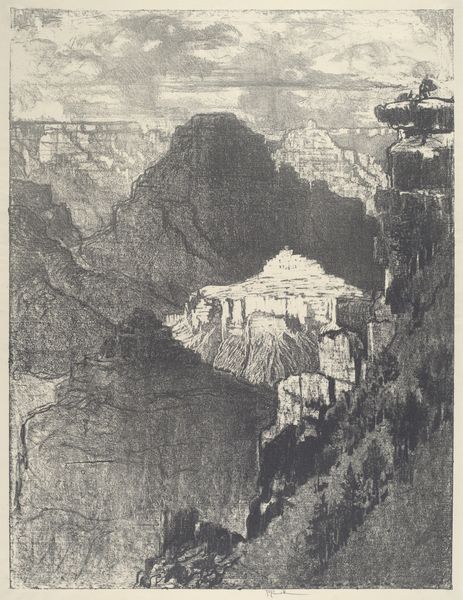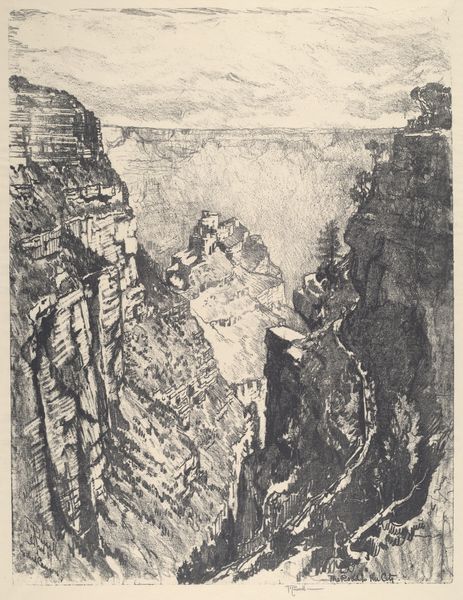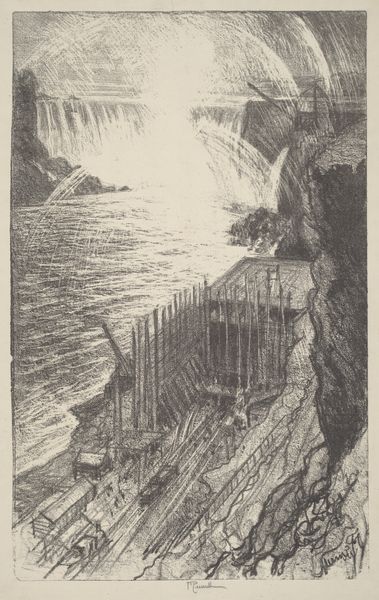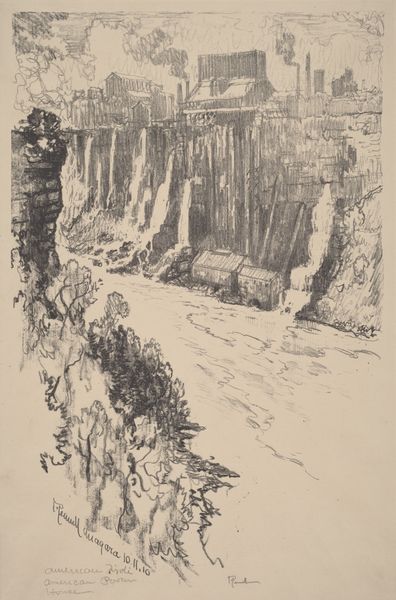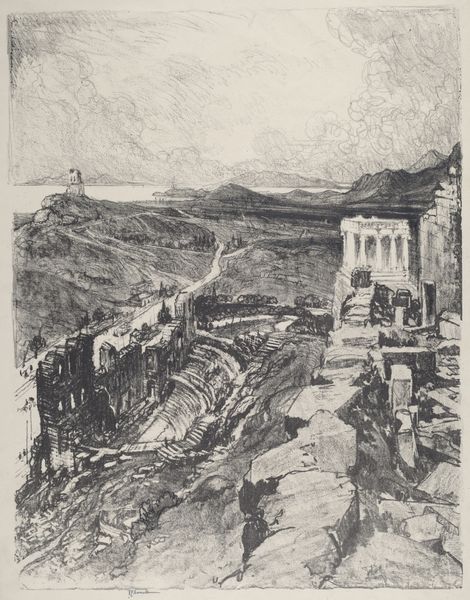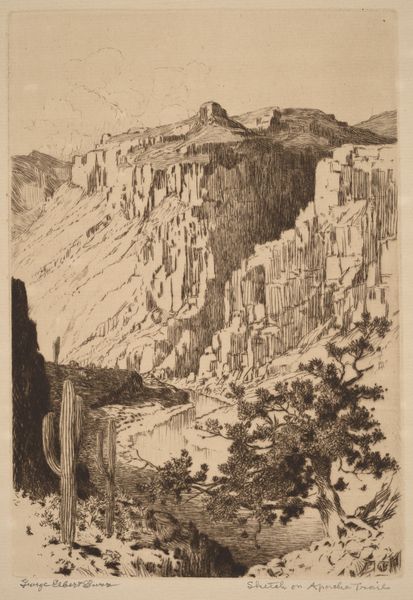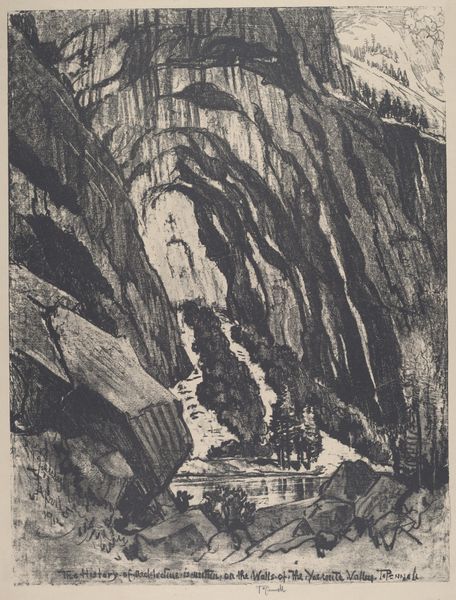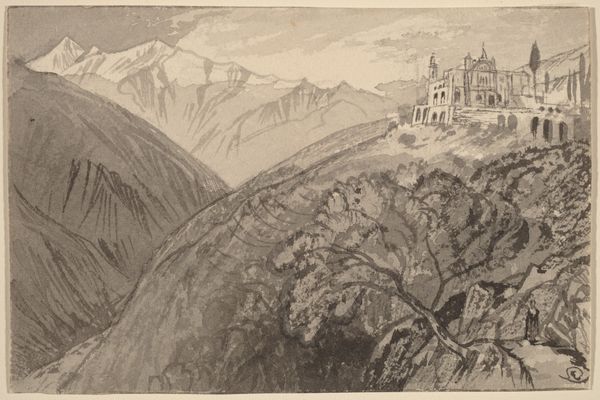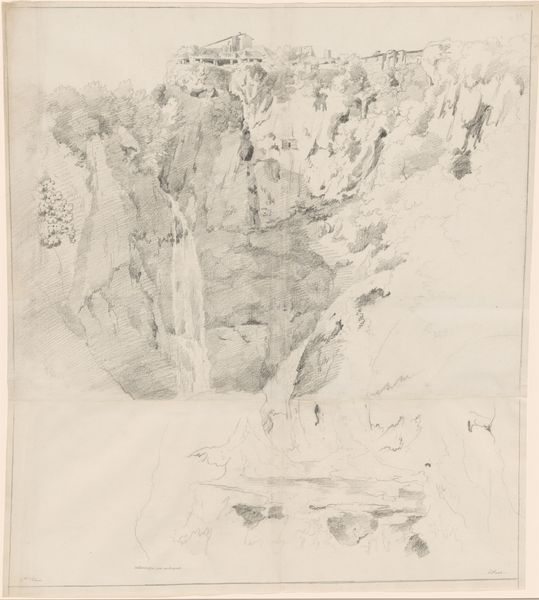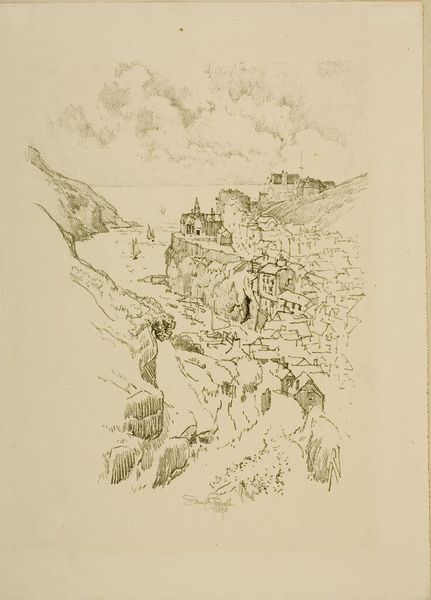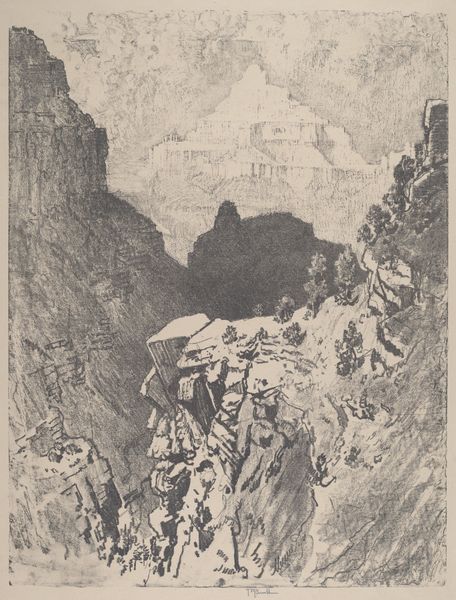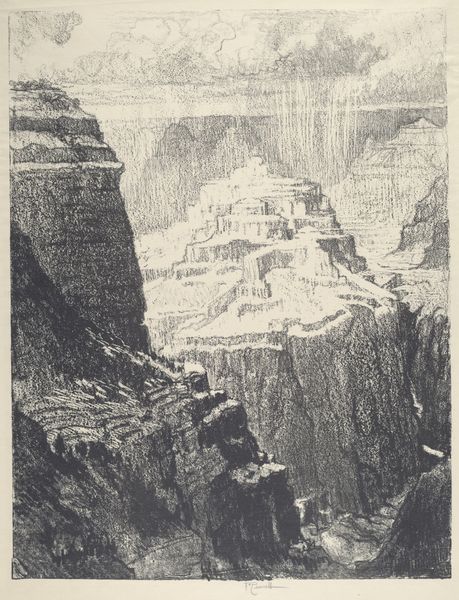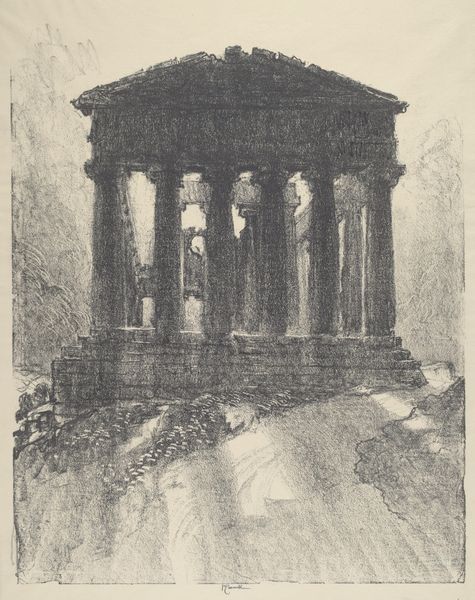
drawing, print, etching, pencil
#
drawing
# print
#
pen sketch
#
etching
#
pencil sketch
#
landscape
#
geometric
#
pencil
#
history-painting
Copyright: National Gallery of Art: CC0 1.0
Curator: Welcome. Today, we're observing Joseph Pennell's 1913 etching, "Temple over the Canon, Segesta." Editor: My initial reaction is the dynamism. The deep shadows create such stark contrasts with the almost fragile rendering of the temple above. Curator: Pennell's composition places the temple atop a steep precipice, really emphasizing the architectural structure as the focal point through placement. Note how the geometry of the temple contrasts sharply with the seemingly chaotic, rough-hewn texture of the canon itself. Editor: Indeed, and the material contrast speaks volumes. We see this man-made edifice juxtaposed with the immense weight and enduring nature of the land. Consider the labor that went into the original construction—quarrying, transport, carving—set against the Earth’s slow, geological work. Curator: It is important to remember that Pennell made this during a time of renewed interest in classical architecture. His lines create a sense of depth, the atmospheric perspective giving us recession and height. The play of light on the temple facade enhances the three-dimensionality, while the details of the surrounding landscape recede. Editor: The technique—etching, the controlled erosion by acid— mirrors the slow degradation of even monumental works, really speaking to issues of labor and entropy in the built environment. And what's truly interesting here is how Pennell positions himself within that history, his mark-making becoming part of that story. Curator: There’s an undeniable timeless quality at play, using established methods and imagery, Pennell really creates a bridge between historical grandeur and the present moment. His technique is incredibly important to how this visual metaphor develops. Editor: This tension of man versus nature, history versus the present... It truly elevates this print beyond a simple landscape depiction. We become aware of ourselves, participants within a system, both building it up and seeing its eventual dismantling. Curator: Seeing this print, I think one can truly appreciate the ways in which formal decisions within artwork shape the very impact that art has. Editor: And how vital understanding the process is to appreciating how those decisions relate to the artwork’s world, beyond purely visual attributes.
Comments
No comments
Be the first to comment and join the conversation on the ultimate creative platform.
